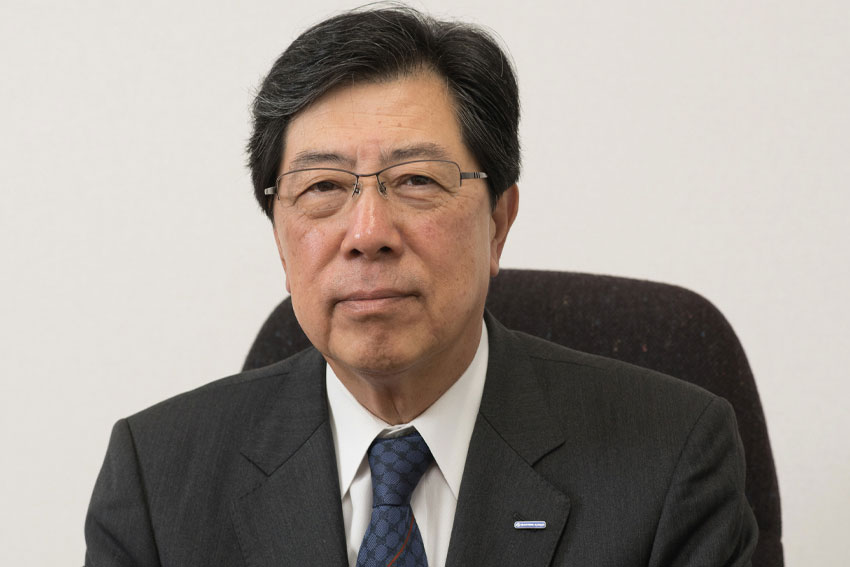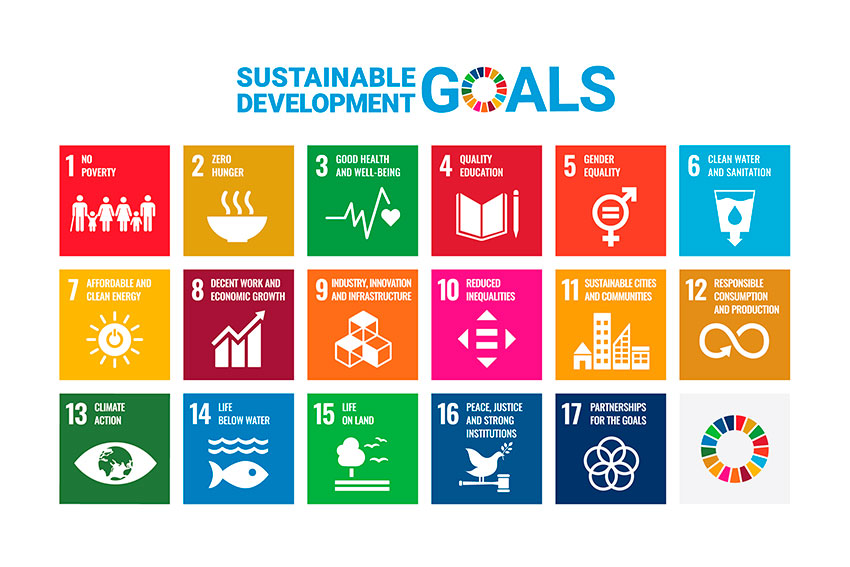One of the first companies to start manufacturing polyethylene foam, Sanwa Kako was first established in 1965 and can call on more than half a century of industry experience. Among its few thousand different products, perhaps the most famous is SUNPELCA, a chemically cross-linked extra thick cell foam that has many applications in the civil engineering, construction and IT industries.

The Japanese chemical sector has suffered when it comes to the production of base chemicals due to regional competitors being able to lower their costs. However, Japanese chemical manufacturers remain leaders when it comes to highly functional and specialized chemical materials. Furthermore, Japan can count on a variety of SMEs who are able to develop niche chemical and material technologies. As a pioneer in foaming technology for polyethylene, what are some of the strengths and weaknesses of the Japanese chemical industry today?
I cannot speak on behalf of all Japanese companies, but I can speak specifically on my own. Our strength is being able to provide high-mix-low-volume production. Recalling the history of the industry in polyethylene foam, the companies started emerging in the 1960s and we ourselves were established in 1965, so we are one of the first companies to start producing polyethylene foam. Nowadays there are multiple companies making this foam, including Sekisui and Furukawa. These are all major companies, and those major firms dominate the market of mass production and did so until the 1980s when the globalization of the chemical industry occurred. Those major companies have an advantage when it comes to mass production, which is more lucrative in terms of making money. As a mid-sized firm, we were forced to take any order that a major company considered undesirable for mass production, so this high-mix-low-volume approach was inevitable for us.
When I became the president in 1996, I realized that high-mix-low-volume was a strength of ours and that major companies cannot do what we do. I had this four concept strategy, which is to provide a small lot with a high-mix while being flexible and catering to the needs of the customer with speed. With that, we are able to accumulate our technology and come to the position that we are currently able to secure in Japan.
With globalization, the major Japanese companies all went overseas, but we stayed here. Eventually, the trend of Japan will no longer cater to mass production, but rather this high-mix-low-volume consumption. The market has shifted in the favor of our strength. 95% of the time, I am sad to say that we made a lot of mistakes, but the 5% of successes come about through the accumulation of knowledge and failures. It is thanks to our past endeavors that we have been able to achieve the successes that we have.
Until around 10 years ago, which was our 50th anniversary, we had been collaborating tightly together with the fabricators in Japan. There are about 200 of them in the country and we have worked together with about 100 of them. The industry is aware of Sanwa Kako and they were the ones who brought new ideas and business opportunities to us. It is thanks to them that we were able to grow. The business style we practice has been changing recently and some major companies like Toyota are now aware of Sanwa Kako. Since we cannot fabricate, we work with a fabricator to produce a product for major companies.
The chemical sector is the largest industrial consumer of both oil and gas and domestically, the Japanese government has stated that the country must be completely carbon neutral by the year 2050. What strategies are you employing to reduce your environmental burden and help Japan reach carbon neutral targets?
In 2018, we formulated a strategy for attaining environmental friendliness in the company. There are several steps that we are currently taking, and the first is the thermal recycling of foam that goes to waste. When the foam is cut out conventionally, the remaining part goes to waste, however by taking that excess and burning it in a boiler, we can convert it to thermal energy, thus creating a more sustainable energy cycle. Also at the same time, we are trying to introduce the 3Rs (Reduce, Reuse, Recycle) and we have created recycled resin pellets,
with these pellets making up 50% of 3R products.

The process of producing foam has not drastically changed for 15 years. There are two methodologies for foam production: one-step foaming and two-step foaming. Two-step foaming is the arena in which we excel and we have produced and developed machinery for this process in-house. We have been using this foam-producing machinery for over 50 years now, but the energy consumption is quite high and inefficient. By creating new types of machinery, we are trying to reduce the consumption levels of oil. Currently, we are building a prototype with the hope that we can test it next year for a one-year period to see if it is an effective way to make contributions and changes. Once it has been proven to be effective, we plan on replacing all of the machinery with this new type of machine with the hope that we can significantly reduce the burden we put on the environment. The goal is a reduction of oil used in production by 80%, which we can all agree is a good thing, especially when you consider the current surging oil prices. Now is a good time to introduce all of these environmental measures for our business purposes as well.
Sanwa Kako has a number of brands under the umbrella of the company. Can you tell us which brand your current focus is on and which you believe has the most potential for future growth?
I think that all of our products are our focus, and that is because we are not pursuing simple polyethylene foam manufacturing, but rather we are adding value to the material itself, for example adding a flame retardant or anti-static element on top of the foam. If you go for just a simple material then it is not going to make enough money, so it is important that we add value to the material. We have 92 grades of lineups with multiple colors and thicknesses. By combining all of these, we have a few thousand different products that can cater to the needs of our customers.
SUNPELCA is your chemically cross-linked cell foam utilizing your original technology and it has many different applications such as civil engineering, construction vehicles, as well as IT appliances. How is SUNPELCA superior to more conventional polyethylene foams?
The big difference between SUNPELCA and other companies' products is the thickness we can create. Other major companies have a 20mm thickness, however, we have a 100mm thickness. In order to achieve a 100mm thickness using a major company’s product, you would have to bond five of them together, whereas we have one piece that is 100mm. By using a sliding machine, we can slice out the thickness to meet the customer’s needs and that is a key strength that we have. The demand for these industries is now getting smaller, so flexibility is required by companies, which is something we have.
Is there a specific industry that you are targeting further expansion into or you are looking to penetrate?
The three areas we see high growth potential for are the automotive industry first of all, especially with the shift to EVs. Since we are a latecomer to the automotive industry, I feel that there is a big opportunity for us with the existing automotive manufacturers and their related material providers. You have to do both the conventional combustion engine parts and EV parts, but since we are a latecomer, we can only focus on EVs.
Self-defense and disaster prevention is another area where we see high growth potential, and while the quantity may be low, the added value factor is quite large. Japan is vulnerable to natural disasters so there would be a continuous need for civil engineering.
What role does collaboration play in your business model and are you currently looking for any co-creation partners in overseas markets?
Internationally we established a joint venture in 1985 within China. It was right after the Cultural Revolution and our firm was requested to provide technology to make polyethylene foam in China. With that, we established about four companies, and in the year 2000, those four were merged into one firm called Changzhou Sanhe, with 80% of their products being sold domestically and 20% to us here at Sanwa, as well as Southeast Asian and American companies.
In Vietnam, we have a 100% owned subsidiary (Sanwa Kako Vietnam) and 95% of their production is for Sanwa Kako. Six years have passed since their establishment and we have reached the break-even point, however in order to expand the business it is crucial that this subsidiary finds the local market and develops its own products to cater to that. If there are any local Vietnamese companies interested in partnerships or collaborations, this is something we are also quite interested in. Also, if any companies elsewhere are interested in our technology, we see potential in providing our technology in a joint venture. In fact, we do provide our technology to the US right now.
Could you elaborate on this collaboration with the United States?
We sold our technology to an American company called Armacell which makes rubber and PVC foams.
Moving forward, are there any other countries or regions that you are targeting for further expansion into and what strategies will you employ to do so?
Right now, the global society is kind of convoluted and it is tough to foresee what the future will be 10 years down the road. Currently, major companies are shifting out of China to Vietnam and other Southeast Asian countries. We are also looking to other Southeast Asian countries for expansion, centering around our operations in Vietnam. Thailand and Malaysia can be targeted and we plan to find their local needs and increase our overseas production capacity. Having said this, as an SME, our weakness is our ability to attract and recruit enough talented personnel to run our operations, so if we expand too aggressively, there is a real risk that we cannot recruit enough employees to run our business. We have to strike a good balance.
Imagine that we came back in three years and have this interview all over again. Are there any goals that you would like to achieve in that time?
If you came back in five years' time, I probably would be able to show you the structure of the company that will be ongoing for the next 30 years. The importance of my mission as the president at Sanwa Kako is to create a base for sustainable company operations. Of course, yearly profit is important but equally important is raising the next generation and giving them opportunities so that we can create valuable human resources, which is something that I need to achieve.
In terms of SDGs, it is important to shift our products to environmentally friendly ones, and the key to that is the focus on plant-driven resin. Right now, it is not that prevalent, however, I feel that soon it will need to replace oil-based resins.
0 COMMENTS